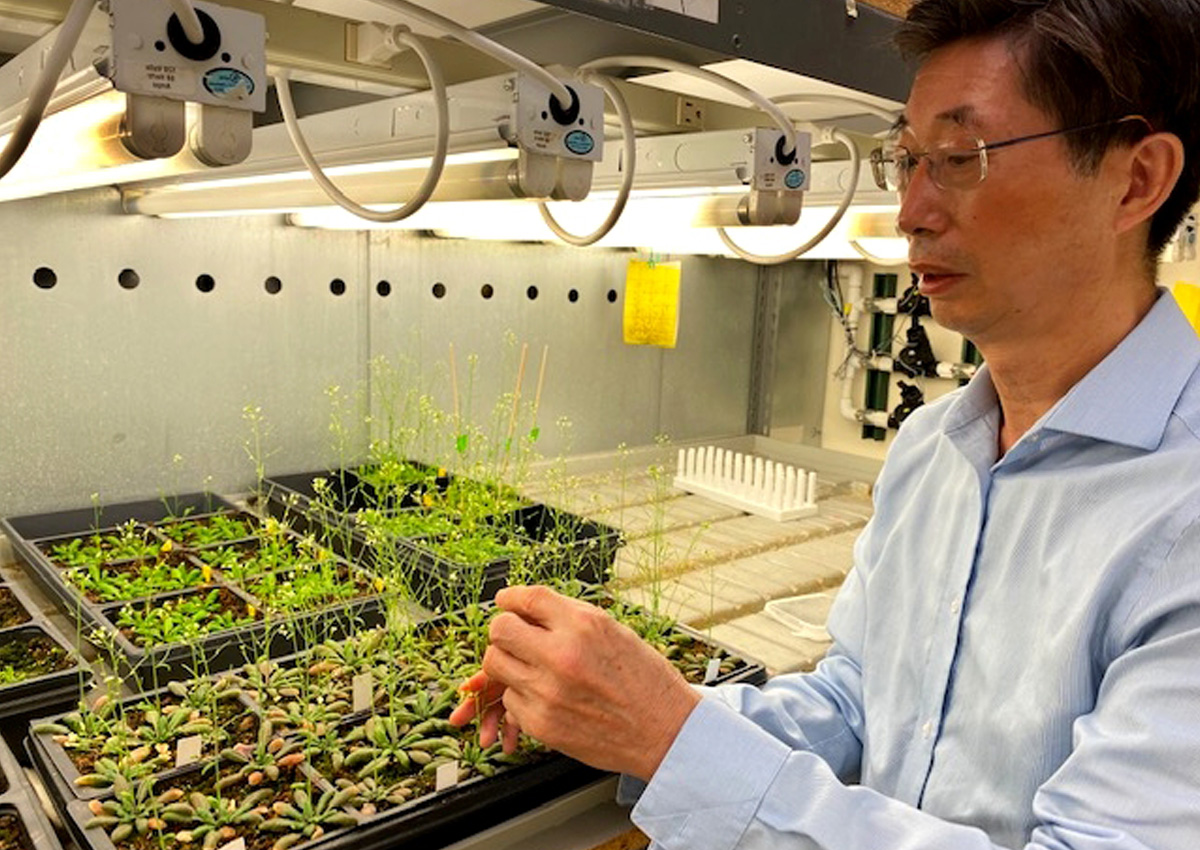
UCR Scientists Solve 50-year-old Mystery behind Plant Growth
November 24, 2021| |
A research team led by the University of California, Riverside have discovered a way by which plants depend on auxin for growth.
Auxin uses two main pathways to orchestrate plant growth, one of them has been discovered by Professor Zhenbiao Yang and his team. One theory proposed a century ago suggests that when plants are ready to grow, auxin causes their cells to become acidic, loosening the bonds between components and allowing the walls to soften and expand. How auxin activates acidification remained a mystery until now.
The team of Professor Zhenbiao Yang discovered that auxin creates that acidity by triggering the pumping of protons into the cell walls, lowering their pH levels. The lower pH activates a protein, expansin, appropriately named because it breaks down links between cellulose and hemicellulose, allowing the cells to expand. Pumping protons into the cell wall also drives water uptake into the cell, building inner pressure. If the cell wall is loose enough and there is enough pressure inside the cell, it will expand.
Auxin not only "contributes" to plant growth, but it is essential to nearly every aspect of a plant's growth and development, including aspects that are important to agriculture such as fruit, seed and root development, shoot branching, and leaf formation. Even the plant's correct responses to gravity and light depend on auxin to ensure roots head down while the shoots grow up toward the light.
For more details, read the article in UC Riverside News.
| |
You might also like:
- Biosensor Allows Real-Time Monitoring of Auxin in Plants
- Researchers Discover How Protein Connecting Calcium and Hormone Regulates Plant Growth
- Scientist Uses CRISPR-Cas9 to Explore Functions of Auxin
Biotech Updates is a weekly newsletter of ISAAA, a not-for-profit organization. It is distributed for free to over 22,000 subscribers worldwide to inform them about the key developments in biosciences, especially in biotechnology. Your support will help us in our mission to feed the world with knowledge. You can help by donating as little as $10.
-
See more articles:
-
News from Around the World
- Younger Consumers Willing to Buy Fresh Fruits Developed Through Biotechnology, Study
- FAO Releases 2021 Report on State of Food and Agriculture
- UCR Scientists Solve 50-year-old Mystery behind Plant Growth
- Researchers Develop Techniques to Breed Plants with Genes from One Parent
- Scientists Develop High-Yielding, Biofortified, Drought Tolerant Transgenic Chickpea
- ISAAA Webinar Highlights Importance of Public-Private Dynamics in Agribiotechnology Industry
- Transgenic Tobacco Becomes Pheromone Factory to Control Pests
- Study Finds Plant-based Alternative Food Consumption in UK Doubles in 10 Years
-
Plant
- Expert Tackles Sustainability Solutions of Gene Editing
- Study Shows Link between CRISPR and Mutated Cancer Cells
- CRISPR-Cas12f1: A Mini Genome Editing Tool
-
Health
- Cuba's Homegrown COVID-19 Vaccines Show Promise
-
Read the latest: - Biotech Updates (December 10, 2025)
- Gene Editing Supplement (December 17, 2025)
- Gene Drive Supplement (February 22, 2023)
-
Subscribe to BU: - Share
- Tweet

